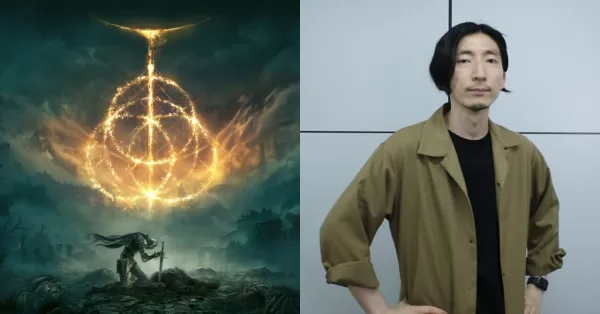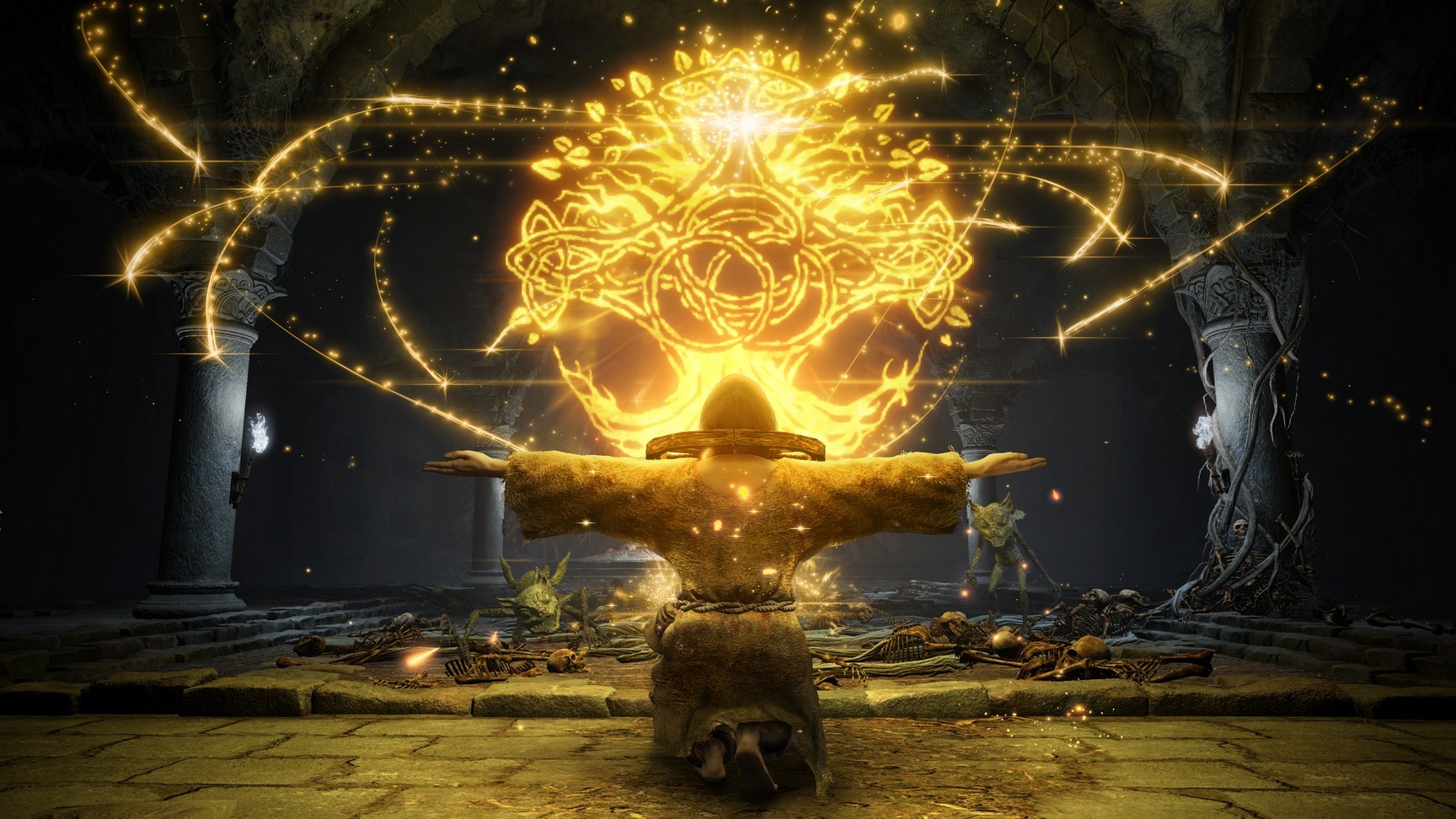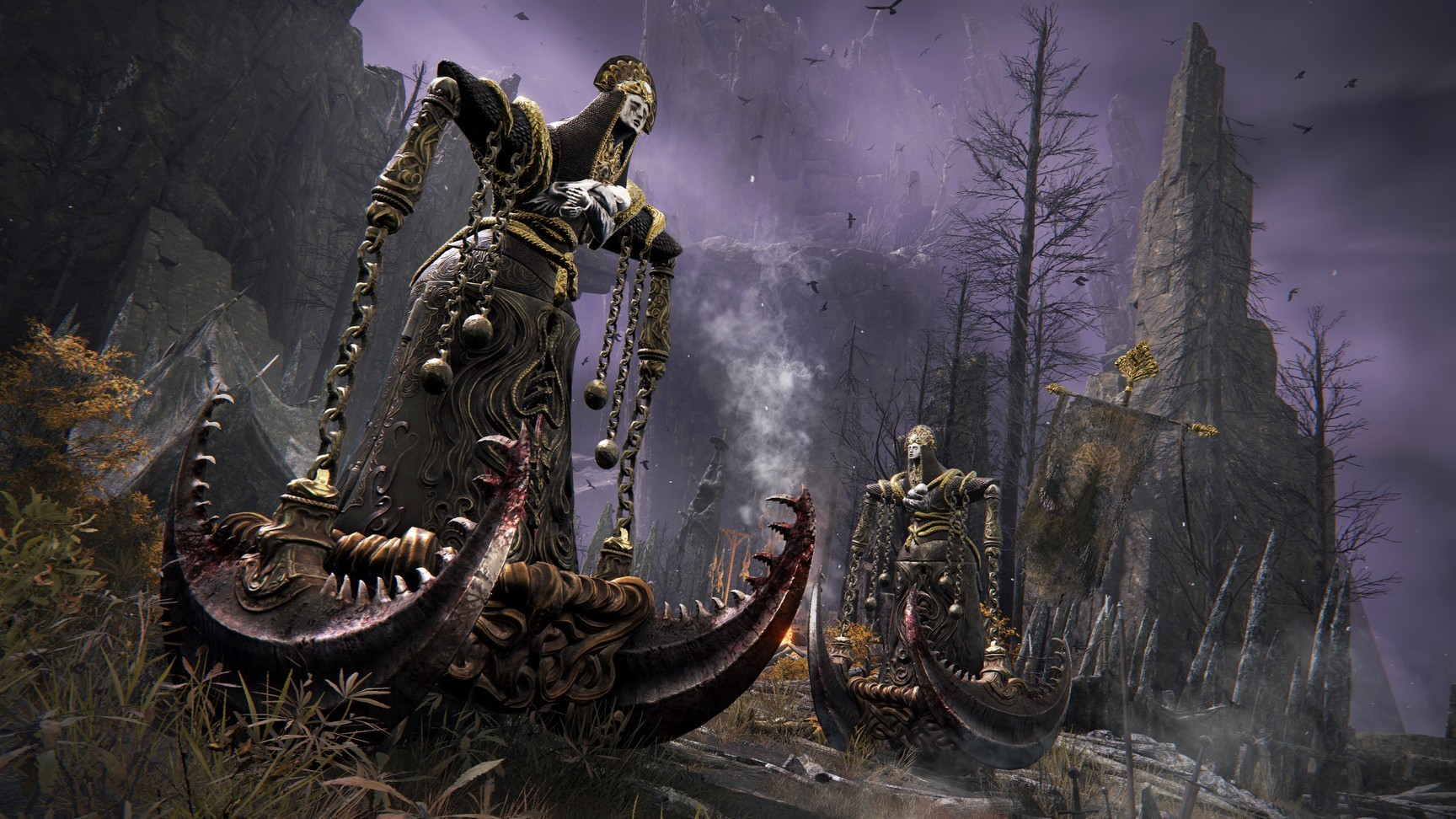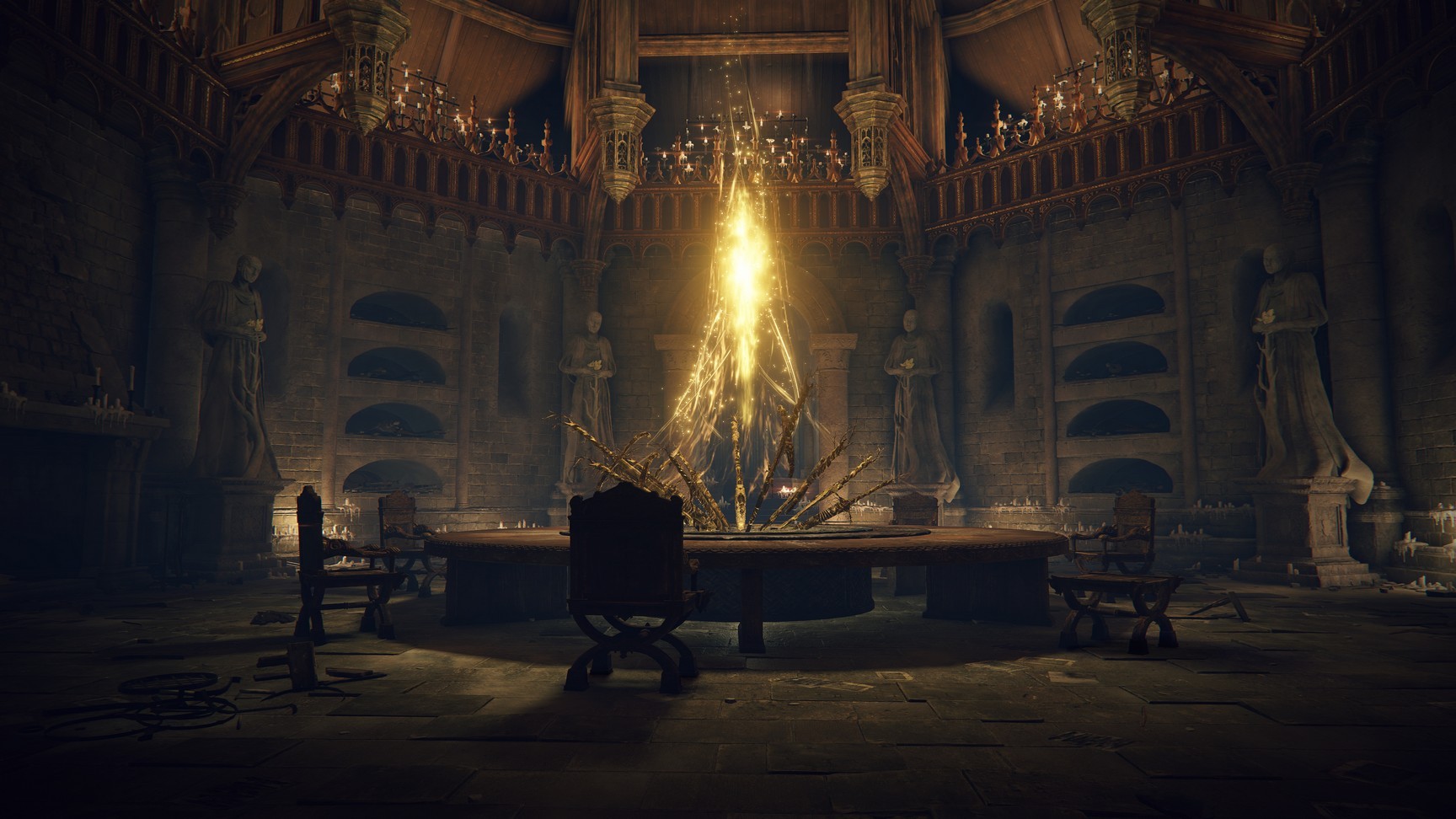Full Interview: FromSoftware’s Yasuhiro Kitao shares big Elden Ring details
Recently, we got to have a 1-on-1 interview with FromSoftware's Yasuhiro Kitao, and he shared lots of new and interesting Elden Ring details.

Recently, we got a chance to virtually sit down with FromSoftware’s Yasuhiro Kitao for a gameplay preview, as well as a 1-on-1 interview. There, Kitao shared lots of big details on the highly-anticipated open-world RPG, including some specific details regarding the game’s combat, traversal, story, and more that have not been revealed before!
The following is the full transcript of the interview with Yasuhiro Kitao:
In previous Souls games, magic can be very powerful, but in other titles some players, the magic isn’t considered to be as effective when compared to fighting using melee weapons. How are you balancing the effectivity of magic, then, in Elden Ring?
YK: Of course, we’re trying to balance the different magic types accordingly with everything else in the game. We don’t want them to feel underpowered compared to the melee types. However, in terms of making sure they are not too strong, we want to do things like add extra casting time for certain powerful magic or make them use our more FP. These are things that we’re currently testing and tweaking to make sure we get them just right.
Will Spirit Summons play a central role in all builds, or will it be limited more towards magic-oriented builds?
YK: So, first of all, we haven’t made the game so that you have to have any specific mechanic or type of play style in order to progress and complete it. But the spirit summons are actually tied to the FP or mana system in the game, so you’ll actually have to level up your FP a little bit in order to summon these spirits. The stronger the spirit, the more FP it will consume upon summoning. At level one, for instance, when you first start out, you might not be able to use any of that, so you might have to specialize a little bit towards that type of play.
How will healing be handled in the game? Will Elden Ring have something similar to the Estus Flask, or will there be farmable healing items like the Blood Vials, or the Moon Grass?
YK: The basic healing item will be similar to that in Dark Souls with the Estus Flask. It will function in a similar way in that you can replenish it charges by resting at a Site of Lost Grace.
This time, to compensate for the fact that there is such a huge play area, when you are long way from a checkpoint on your journey and you run out of healing potions, you may want to quick pick me up. So we have implemented a feature where if you defeat a small group of enemies, say, three to five enemies, it will actually give you a little health boost. This is to try and alleviate the stress of traveling all the way back to the last checkpoint just to replenish or to heal.
Regarding the FP, how will replenishing mana be handled?
YK: You may be familiar with Dark Souls how it was where could allot your healing or your FP flasks to your tastes or build preference. That is still intact in Elden Ring.
What would you say is the speed of combat in Elden Ring? Will it be fast paced similar to Bloodborne and Dark Souls 3, or will the pace be a bit more deliberate like in the earlier Dark Souls games?
YK: We’d say the sense of speed of combat is closer to Dark Souls 3. If you remember we had Dark Souls 1 and 2 released with the more steady, deliberate combat speed. Then Bloodborne came out which really kind of changed that and added a lot more speed and aggression. We saw that the fans really responded well to that, so we wanted to incorporate a bit of that speed into Dark Souls 3, and that was met quite well. So we’ve used that as a base, sort of a starting point for Elden Ring.
Does that mean players can expect stamina to work the same way as Dark Souls 3 in terms of the time it takes to regenerate?
YK: Yes, you can expect stamina to work in a similar way to how it did in Dark Souls 3, except in the overworld. As we want to alleviate the stress of traversing the huge overworld, stamina management only comes into play during combat, and within dungeons. So, when you’re out roaming the Lands Between and you’re not in combat, you can hold down the sprint button indefinitely without consuming stamina. We wanted to give the player a stress-free experience as much as we could.
Regarding the game’s world, you mentioned that there will be a map in the game for navigation. Can you share specifically how the map would work? For instance, at the start of the game, what will players see in the map, and how can they unlock more of it?
YK: So yes, when you start out, there’s basically no information available to you on the map. You will see your own player position, and you’ll also see an illustrated icon of a monument in the distance. This is meant as a sort of starting guide, something that you can see from the player’s perspective at the start. And if you head over there, you’re likely to encounter your first map fragment and start to add information to the map to get your bearings.
What if you discover a dungeon in the open world in an area you don’t have a map fragment of yet, will that part of the world be shown on your map?
YK: Even if you don’t have the piece of the map which shows the information of the terrain around you, if you discover a dungeon or a point of interest or checkpoint, they will actually be marked on the map appropriately. This is so that you can sort of triangulate [your position] and get your bearings on where everything is in relation to the dungeon that you’ve discovered.
What is your overall design philosophy when it comes to crafting the game’s open world? Especially in relation to the typical open worlds that we see in games today.
YK: One thing we’re trying to do, one aspect of the philosophy when designing this world is to make it as dense as possible. We don’t want it to just be wide open and empty space. We want it to be full of surprises and things to discover.
We’re also being conscious of the actual level design and handcrafted nature of the overworld itself. So even though it is very expansive, it will have a lot of verticality, and a lot of multi-layering, so the player can enjoy exploring it in all dimensions.
And of course, we’re trying to be conscious of how the player traverses that world, trying to make it hassle free and easy for them. So, instead of having of being able to only travel between checkpoints, the player is able to open their map anywhere on the overworld, outside of the dungeons, and select a previously discovered checkpoint, a Site of Lost Grace, and warp back to there. This is made to alleviate some of that stress of traveling long distances to go back to somewhere you’ve already been.
Will the Elden Ring PS5 version have DualSense Haptic Feedback and 3D Audio features?
YK: We are not considering 3D Audio at the moment, but we are looking at ways to implement the haptic feedback of the DualSense controller.
What are your performance targets in terms of framerate and resolutions for the previous and current gen consoles?
YK: This is also something we are continuing to consider and tweak to balance performance; you can probably think of it in terms of not being too different from our targets on previous games.
You mentioned during the presentation that there will be a focus on character stories. Previous games, from Dark Souls to Bloodborne, already had character stories, but they were more of side quests. So, will we expect Elden Ring to have these character moments as sort of side quests or will they be tied more into the main questline, of the game?
YK: First of all, the number of NPCs and characters you can interact with in Elden Ring is just a lot more than in previous games. So, there are a lot more of these stories and a lot more personality to the world that they bring. But also, the main through line story of the main NPCs you’ll encounter, we are creating this to be more approachable and more understandable from a superficial level. So, you can compare that to something like Sekiro’s storytelling or narrative where the main through line story is easier to understand.
In previous games, the character quests can be easily missed by some players during their first run. In Elden Ring then, will it be easier to experience these character storylines during their initial playthrough?
YK: You mentioned Bloodborne; we feel like we went a little bit too overboard with hiding NPCs inside content in that game. There won’t be anything quite so hard to find in Elden Ring we feel. But it is an enormous world, and there are a lot of characters, so you may have to go out of your way to find most of them. That’s not to say we’re trying to hide them in really difficult to find places, but you may have to go off the beaten path and you may have to explore to encounter some of these side quests from NPCs who are just chilling in a dungeon somewhere in the overworld.
One of the most exciting things about the game is that it is written in large part by George RR Martin. Given that your usual approach is gameplay first before story, what was it like developing with a lore/story first this time?
YK: We still put the game first. This is not supposed to be 100% story driven game. It’s a story that serves the gameplay. But this time it was different, as you say, with George RR Martin collaborating with us on the mythos and the history of the game world and the setting. So, we took that and we applied it, and we adjusted it to suit our needs, and George RR Martin was quite happy to let us take full rein of that. And we really made it work to our favor. It’s because we have that mythos that the current game world exists, if you will. It was a really nice two-way collaboration.
Elden Ring will release on PS5, PS4, Xbox Series X|S, Xbox One, and PC on January 22, 2022.






